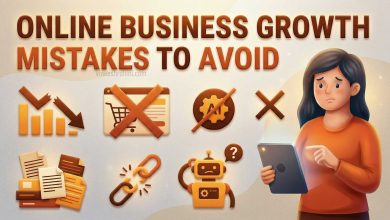How Dropshipping Works in India : Comprehensive Guide 2024
How dropshipping works in india : Dropshipping is a popular e-commerce business model that enables entrepreneurs to sell products online without maintaining inventory or handling shipping logistics. In a dropshipping model, sellers list products on their website or online store; when a customer places an order, the supplier directly ships the product to the buyer. This model removes the need for warehouse storage, inventory management, and bulk purchases, making it an appealing option for aspiring business owners in India and around the world.
Table of Contents
In India, dropshipping has gained significant traction over the past few years, thanks to the rise in e-commerce, improving digital payment infrastructure, and growing interest in online shopping.
Also Read : Affiliate Marketing 2024 : Affiliate Marketing For Beginners
This model is particularly suitable for small business owners and first-time entrepreneurs, as it requires minimal upfront investment, making it accessible and low-risk.
How Dropshipping Works: The Basics

At its core, the dropshipping process is straightforward:
- Setting Up an Online Store: The dropshipping business owner creates an e-commerce store, typically on platforms like Shopify, WooCommerce, or marketplaces such as Amazon or Flipkart.
- Listing Products: The seller selects products from suppliers to list in their store. These products can be anything from clothing and accessories to electronics and home decor.
- Customer Orders: When a customer places an order, the business owner purchases the product from the supplier at a wholesale price and provides the supplier with the customer’s shipping details.
- Supplier Fulfillment: The supplier packages and ships the product directly to the customer under the seller’s brand or in neutral packaging.
- Profit: The seller’s profit is the difference between the price paid by the customer and the wholesale cost paid to the supplier, minus any additional fees.
In India, dropshipping generally operates on a similar basis but may involve specific considerations such as supplier location, shipping times, customs regulations, and preferred payment methods.
Setting Up a Dropshipping Business in India
To start a dropshipping business in India, it’s essential to follow these steps:
- Select a Niche: Identifying a profitable niche is crucial to stand out in a competitive market. Choose products with high demand, limited competition, or unique appeal to Indian consumers. Examples of popular dropshipping niches in India include fitness products, eco-friendly items, tech gadgets, fashion accessories, and health supplements.
- Choose a Platform: There are various e-commerce platforms for dropshipping, each with different features. The most popular options include:
- Shopify: A user-friendly platform with dedicated dropshipping apps like Oberlo and Spocket.
- WooCommerce: An open-source platform that integrates with WordPress and offers plugins for dropshipping.
- Amazon and Flipkart: Indian e-commerce giants where dropshipping sellers can leverage an existing customer base but may face higher fees.
- Find Reliable Suppliers: Sourcing reliable suppliers is critical to ensure product quality and timely delivery. Indian dropshipping businesses often work with domestic suppliers to minimize shipping delays, customs hassles, and high import taxes. Alternatively, sellers can use international suppliers on platforms like AliExpress, though delivery times may be longer. Several Indian B2B marketplaces, such as IndiaMART and TradeIndia, allow sellers to find suppliers within the country.
- Set Up Payment Gateways: Offering secure and reliable payment options is vital in India, where digital payments are booming. Use payment gateways that support Indian currency and preferred payment methods like UPI, credit/debit cards, and wallets (e.g., Razorpay, Paytm, CCAvenue).
- Market Your Store: Successful dropshipping relies heavily on effective marketing. Utilize digital marketing strategies, such as social media advertising, influencer marketing, SEO, and Google Ads, to drive traffic to your store. Building brand trust and customer loyalty through social proof and high-quality content is particularly valuable in India’s highly competitive market.
- Focus on Customer Service: Since the seller doesn’t have direct control over fulfillment, it’s essential to provide excellent customer service to manage expectations and resolve issues. Communicating clearly with customers and addressing inquiries promptly can help maintain a positive brand reputation.
Platforms and Tools for Dropshipping in India

A successful dropshipping business in India relies on the right tools to streamline operations and increase efficiency:
- E-commerce Platforms:
- Shopify: Has integrated apps like Oberlo for importing products from AliExpress and Spocket for sourcing suppliers.
- WooCommerce: Provides flexibility through plugins like AliDropship and Dropified for managing product sourcing and orders.
- Product Sourcing Tools:
- AliExpress: Offers a vast selection of products that can be sourced for dropshipping, with integration tools like Oberlo.
- Spocket: Focuses on suppliers from the US and Europe, ideal for dropshippers aiming for quality over cost.
- IndiaMart: A domestic B2B marketplace, perfect for sourcing products from Indian suppliers.
- Payment Gateways:
- Razorpay: Provides comprehensive support for Indian businesses, with options for UPI and credit/debit card payments.
- Paytm Payment Gateway: Suitable for Indian customers and widely trusted.
- Inventory and Order Management:
- Oberlo: An app for Shopify users to automate product sourcing and order fulfillment from AliExpress.
- Dropified: Works with both Shopify and WooCommerce to streamline product management.
- Customer Service Tools:
- Freshdesk: An Indian-origin customer support software for managing customer inquiries.
- WhatsApp Business: Essential in India for real-time customer communication and order updates.
- Marketing Tools:
- Facebook Ads: A cost-effective way to reach target audiences in India.
- Google Ads: Useful for reaching Indian shoppers who are actively searching for products.
Benefits of Dropshipping in India
- Low Startup Costs: Dropshipping requires minimal upfront investment since you don’t need to purchase inventory or maintain a warehouse.
- Scalability: This model allows for easy scaling, as suppliers handle storage and shipping logistics. Expanding product lines and reaching more customers becomes straightforward.
- Flexibility: Since dropshipping is managed online, entrepreneurs can run their businesses from anywhere. This flexibility is particularly appealing for young Indian entrepreneurs and freelancers.
- Low Risk: Unlike traditional retail models, there’s no risk of unsold inventory. Sellers can test different products and niches to find what works without worrying about excess stock.
Challenges of Dropshipping in India
- Shipping and Delivery Times: Dropshipping products from international suppliers may result in long shipping times, which can affect customer satisfaction. Working with Indian suppliers can help mitigate this, though it may limit the range of available products.
- Competition and Price Wars: With low barriers to entry, dropshipping has become a crowded market in India. Competing on price alone can lead to reduced profit margins, so building a unique brand and customer loyalty is key.
- Quality Control: Sellers have limited control over product quality, packaging, and shipping, which can lead to customer complaints. Working closely with reliable suppliers and testing products before listing them can reduce this risk.
- Return and Refund Policies: Handling returns can be complex in dropshipping, especially when suppliers are international. Sellers must establish clear return policies and work with suppliers who offer flexible returns.
- Payment Gateway Fees: Some payment gateways charge transaction fees that can cut into profit margins, particularly for high volumes of small orders.
Legal and Tax Implications in India
Dropshipping businesses in India must be aware of legal and tax obligations. Key points include:
- Goods and Services Tax (GST): Dropshipping businesses in India are subject to GST. It’s important to register for GST and charge the appropriate rate on transactions. Import duties may apply if products are shipped from international suppliers, and sellers should clarify with suppliers about the terms.
- Trademark and Intellectual Property: Selling branded products without authorization can lead to legal issues. Always check for copyright and trademark compliance when listing branded products.
- Return and Refund Compliance: As per Indian consumer protection laws, sellers must adhere to transparent return and refund policies. Clear policies should be outlined on the website to avoid legal complications.
Future of Dropshipping in India

The Indian e-commerce sector is growing rapidly, and dropshipping is expected to continue flourishing as more consumers embrace online shopping. Government initiatives like Digital India, increased internet penetration in rural areas, and advancements in logistics and payment infrastructure are fostering an environment where e-commerce can thrive. Indian entrepreneurs are now more empowered to start businesses without large capital requirements, making dropshipping a desirable choice for many.
Technological advancements are also expected to drive growth in this sector. AI-powered product recommendation tools, personalized marketing automation, and enhanced customer support solutions will allow dropshippers to optimize their operations and cater to a growing base of online consumers in India. Furthermore, as local manufacturing scales up in India, dropshippers will have access to a wider range of products from domestic suppliers, reducing reliance on international sources.
How Dropshipping Works in India : Conclusion
Dropshipping in India presents a promising business opportunity for entrepreneurs willing to navigate its unique challenges. This model offers significant advantages, including low startup costs, scalability, and flexibility, making it accessible to a wide range of people. However, success requires careful planning, strong supplier relationships, and effective marketing. By understanding the nuances of the Indian market, selecting reliable suppliers, and focusing on customer service, Indian entrepreneurs can build successful and sustainable dropshipping businesses.
Buy Now : News & Magazine Website AI Automated
With the right tools, a clear strategy, and dedication, anyone in India can create a profitable dropshipping business that meets the growing demands of the digital economy. As the market matures and consumer expectations evolve, dropshipping will remain an attractive entry point into e-commerce, offering the freedom and flexibility to adapt and grow.
Keywords : How dropshipping works in india – How dropshipping works in india 2024 – How dropshipping works in india 2025 , How dropshipping works in india steps , How dropshipping works in india Now



